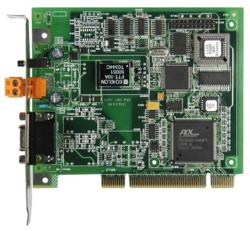Bus interface
Overview
Bus interface: The display card is inserted on the motherboard to exchange data with the motherboard. Main ISA, EISA, VESA, PCI, AGP, etc. connected to the motherboard. The ISA and EISA bus are wide and narrow, slow speed, and VESA bus extension ability, these three bus have been eliminated by the market. It is now common to PCI and AGP interfaces. The PCI interface is a bus interface, operating in a 1/2 or 1/3 system bus frequency (usually 33MHz), and if other data is to be processed while processing image data, all data flowing through the PCI bus must be respectively During the treatment, it is necessary to exist in data retention. When the amount of data is large, the PCI bus is very nervous. The AGP interface is designed to solve this problem. It is a dedicated display interface (that is, can insert a sound card, display card, video capture card, etc. in the motherboard, but not on the motherboard Insert any board in addition to the AGP display card in the AGP slot), with the characteristics of exclusive bus, only image data can pass through the AGP port. In addition, AGP uses a higher bus frequency (66MHz), which greatly increases the data transfer rate.
The current development trend of the current display card interface is the AGP interface. It should be noted that the AGP technology is divided into AGP1 × and AGP2 ×, the maximum theoretical data transmission rate of the latter is twice the former, and the AGP4 × display card (such as Savage4) will appear, and its maximum theoretical data transmission rate will Reach 1056MB / s. Distinguishing the AGP interface and the PCI interface, the front width width of the former is very popular, commonly known as "gold fingers", the latter leads up and down.

Bus Interface Category
Bus Interface is an interface for imaging board and computer links, and bus interfaces include: ISA / EISA, AGP, VME, VL, PCI / PCI-X, PCMCIA, PMC, PCIEXPRESS, etc. The bus interfaces widely used in the machine visual field are mainly based on various bus: PCI, PCI-X, PCIEXPRESS. The PCI bus is independent of the CPU system bus, which uses a unique intermediate buffer design to directly hang the high-speed peripherals directly on the CPU bus, breaking the bottleneck, making the CPU to achieve sufficient play. The image capture card utilizes the advantages of the PCI bus to achieve the high-speed image data transmission and the main control system.
In order to achieve further improvement of PCI bus data transmission speed, the PCIG organization specifies the fast data transmission standards such as PCI-X, PCIExPress based on the PCI standard protocol. At the same time, in order to adapt to embedded system applications, PCISIG has also launched standards such as PC104, PC104Plus, PXI, CompactPCI.
PCI (PeripheralComponentInterConnected) buses is part of the PentiumPC, theoretical bandwidth can reach 132MB / s, usually 95MB / s. PCI -X
PCI is an extended architecture of the PC bus, which is different from the PCI bus that the PCI bus must be exchanged between the target device and the bus, while PCI-X allows the target device Switch only in a single PCI-X device. PCI-X has three different operating frequencies, 66MHz, 100MHz and 133MHz, and the data rate is 1Gb / s at 66MHz.
PCI-E
pciexpress also known as PCI-E, It is the next generation of PCI bus, the original name "3GIO" is proposed by Intel. Its maximum feature is fast transmission rate, the PCI-E has X1, X4, X8, X16, and PCI-X1 transmission rate can reach 500MB / s. X16 can reach 8Gb / s.
PC104 / PC104PLUS / PXI / CompactPCI
All of the bus specifically defined for embedded controls
Latest: Hardware virtualization
Next: Microsoft ActiveSync








